| Feast of the Epiphany Resources for liturgy, assembly and religious education |
The feast of the Epiphany is celebrated on 6th January. If the 6th falls on a Saturday or Monday, the feast is celebrated on the Sunday. Schools may wish to have their own Epiphany liturgy on a suitable day at the beginning of term. The feast of the Epiphany originated in the Eastern church in the 3rd century where it was a celebration of the baptism of Jesus linked to his nativity. It ranked as one of the three most important feasts of the church's year alongside Easter and Pentecost (the celebration of Christmas as a feast only began in the 3rd century also and was of lesser importance than Epiphany). The word epiphany comes from the Greek ἐπιφάνεια (epiphaneia) meaning to make manifest, to show forth, to appear. This was associated with the appearance of the Spirit at Jesus' baptism and the voice of God making manifest the identity of Jesus as his Son (cf. Mark 1:11). One of the main features of the original feast was the blessing of the water to be used for baptism (something now done at the Easter Vigil in the Western church). The feast was adopted in the Western church from the 4th century but lost its association with Christ's baptism, instead becoming a celebration of the making known of Christ to the gentiles in the persons of the Wise Men of St Matthew's gospel (Matthew 2:1-12). The gospel calls the men from the East who visited the Christ child μάγοι (magoi) meaning sage, wise or learned. They are first referred to as kings by the theologian Tertullian (160-220) who calls them fere reges ('almost kings' - because of their noble calling, representing the Gentiles paying homage to Christ and no doubt reflecting the Old Testament reference to kings in Psalm 71 ('The kings of Sheba and Seba shall bring him gifts') which is used at the Mass of the Epiphany). The gospel does not say how many Magi there were; this tradition seems to have started with the theologian Origen (185-254) who assumes there must have been three kings because there were three gifts (gold, frankincense and myrrh). The first pictorial representation of the three wise men is found in the catacombs of Prisclla dating from the 2nd century (see below). The three kings seem to have been given names in the 6th century: Caspar (Kaspar or Gaspar), Melchior and Balthasar. They were venerated as saints in the middle ages and the cathedral at Milan claimed to have their relics, brought from the imperial city of Constantinople in the 5th century. These relics were taken to Germany by Emperor Frederick Barbarossa in 1162 and are now enshrined in Cologne Cathedral. In England, the Queen makes offerings of gold, frankincense and myrrh in the chapel royal at St James' Palace on the feast of the Epiphany. From 2018, the Feast of the Epiphany has been restored as a Holyday of Obligation in England and Wales, to be celebrated on 6th January. If the 6th January falls on a Saturday or Monday, the feast is transferred to the Sunday. |
|
| The Gospel Narrative |
|
Matthew 2:1-12 NRSV After Jesus had been born at Bethlehem in Judaea during the reign of King Herod, some wise men came to Jerusalem from the east. 'Where is the infant king of the Jews?' they asked. 'We saw his star as it rose and have come to do him homage.' When King Herod heard this he was perturbed, and so was the whole of Jerusalem. He called together all the chief priests and the scribes of the people, and enquired of them where the Christ was to be born. 'At Bethlehem in Judaea,' they told him 'for this is what the prophet wrote: And you, Bethlehem, in the land of Judah, you are by no means least among the leaders of Judah, for out of you will come a leader who will shepherd my people Israel'. Then Herod summoned the wise men to see him privately. He asked them the exact date on which the star had appeared, and sent them on to Bethlehem. 'Go and find out all about the child,' he said 'and when you have found him, let me know, so that I too may go and do him homage.' Having listened to what the king had to say, they set out. And there in front of them was the star they had seen rising; it went forward, and halted over the place where the child was. The sight of the star filled them with delight, and going into the house they saw the child with his mother Mary, and falling to their knees they did him homage. Then, opening their treasures, they offered him gifts of gold and frankincense and myrrh. But they were warned in a dream not to go back to Herod, and returned to their own country by a different way. |
|
| Symbolism | |
 |
The traditions around naming and then developing characters for the Wise Men of the gospel began in the 6th century and grew considerably in the middle ages. There is little consistency about which king is which or who brings what gifts (although Balthasar is usually associated with the myrrh). Caspar Caspar is sometimes identified as the King of Tarsus and is represented as an old man with white hair and beard. He wears a green cloak and crown and is the first to kneel in adoration of the Christ child. Caspar is often associated with the gift of gold (though this is sometimes Melchior). Melchior Melchior is the middle-aged King of Arabia and brings the gift of frankincense from his homeland. He is portrayed with brown hair and beard, wearing a gold cloak Balthasar Balthasar is the young black King of Ethiopia and wears a purple/blue cloak. Balthasar is traditionally associated with the gift of myrrh. Gold Gold is the gift of kings, a symbol of kingship. Frankincense Frankincense is a type of incense made from the resin of Boswellia trees. Incense is used as a mark of honour used in worship (as when we incense the priest and people at Mass, or the altar or book of the gospels or gifts of bread and wine). It is a symbol of deity. The gift of frankincense is traditionally symbolized by the colours bronze/brown and green. Myrrh Myrrh is a type of incense made from the gum of the Commiphora tree. The essence can be extracted as a liquid as was used to dress wounds, and anoint the dead. The Christian tradition links the birth of Christ with his death (he is born for the salvation of the world which is achieved in the sacrifice of his death) and so the myrrh has come to symbolize death and the oil that was brought by the three Marys on Easter morning to anoint his body. Myrrh is a symbol both of healing (or salvation) and of death. The gift of myrrh is traditionally symbolized by the colours purple and blue.
|
| PowerPoint Presentation | |
 |
A short PowerPoint presentation to explain the Epiphany. Suitable for a school assembly or RE lesson. |
| Epiphany Mass Texts and Readings | |
 |
Prayers Readings *For Masses with children it is suggested that the second reading is omitted. Ideas for an Epiphany Liturgy This is a Mass of light - consider how you might use light and lights. Use figures from the crib to create a simple tableaux before the altar - just the Christ child, the kings (and camels) and the star. Tell the gospel story using the figures. Three wrapped boxes representing the gifts of the kings could be brought in procession (at the beginning of Mass, during the gospel, or at the offertory) and placed before the altar. The traditional colours are gold for the gold, bronze or brown for the frankincense, and purple or blue for the myrrh. Metallic papers are widely available to order online. Use different voices for the gospel reading. Perhaps have only this reading.
Use T S Eliot's The Journey of the Magi, dramatized for three voices, as a reflection on the gospel. |
| Liturgical Music for Epiphany | |
 |
Hymns Liturgical music for choir |
| Blessing of Classrooms | |
 Three Wise Men Barlborough Hall School Epiphany 2018 |
The Epiphany tradition of blessing houses for the new year is a practice that can be effectively adapted for schools. Three children dress up as the three kings (carrying their gifts of gold, frankincense and myrrh; or even just wearing crowns) and carry a star (on a stick) from classroom to classroom. In each room, a brief excerpt from the gospel story could be read, a sweet distributed to each child as a symbol of the gifts, and the room (or rather the people who will occupy the room in the coming year) is blessed by chalking the blessing over the door. Any of these elements can be adapted to suit the circumstances and resources available. |
 |
A Simple Classroom Blessing The Kings arrive in each classroom, accompanied by children carrying lights/candles, and announce their arrival by ringing a bell or singing the first verse of We Three Kings. A reader reads from the gospel of Matthew (use the symbolism of reading from the Bible book instead of from a sheet of paper): After Jesus had been born at Bethlehem in Judaea during the reign of King Herod, some wise men came from the east. And there in front of them was the star they had seen rising; it went forward, and halted over the place where the child was. The sight of the star filled them with delight, and going into the house they saw the child with his mother Mary, and falling to their knees they did him homage. Then, opening their treasures, they offered him gifts of gold and frankincense and myrrh. The kings take around the gifts of a sweet for each child. Then the chaplain (or one of the kings) takes chalk and marks up the blessing on the door of the classroom. (If it is difficult to do this on the paint of the door it is an idea to use a strip of black sugar paper attached to the top of the door or above it). 20 + C + M + B + 19 The prayer is spoken as the chalk marks are made above the door: The three Wise Men, Caspar, Melchior and Balthasar, followed the star to where Jesus was born two thousand and nineteen years ago. They did him homage and offered him gifts of gold and frankincense and myrrh. May Christ bless this classroom and all those who teach and learn in it this year. May it be a place of joy and peace. Amen. Then the chaplain blesses the classroom and the people in it by sprinkling holy water. And the procession of kings departs for the next room. (Don't forget to include the staff room and offices too!) |
| The Wise Men and the Jesuit Pupil Profile | |
 |
The story of the Wise Men picks up on a number of the virtues in the JPP. The word Magi means a well-educated or learned person and is often translated as 'wise' because these people were scholars who used their wisdom to good effect. They are curious about the prophecies they have studied and curious about the new star which they follow with intent to Bethlehem. Their wisdom tells them not to report back to Herod and so they return to their country by a different route. They bring generous gifts with them of gold, frankincense and myrrh and, filled with faith, they see in the newborn baby hope for the future of the world. |
| Images | |
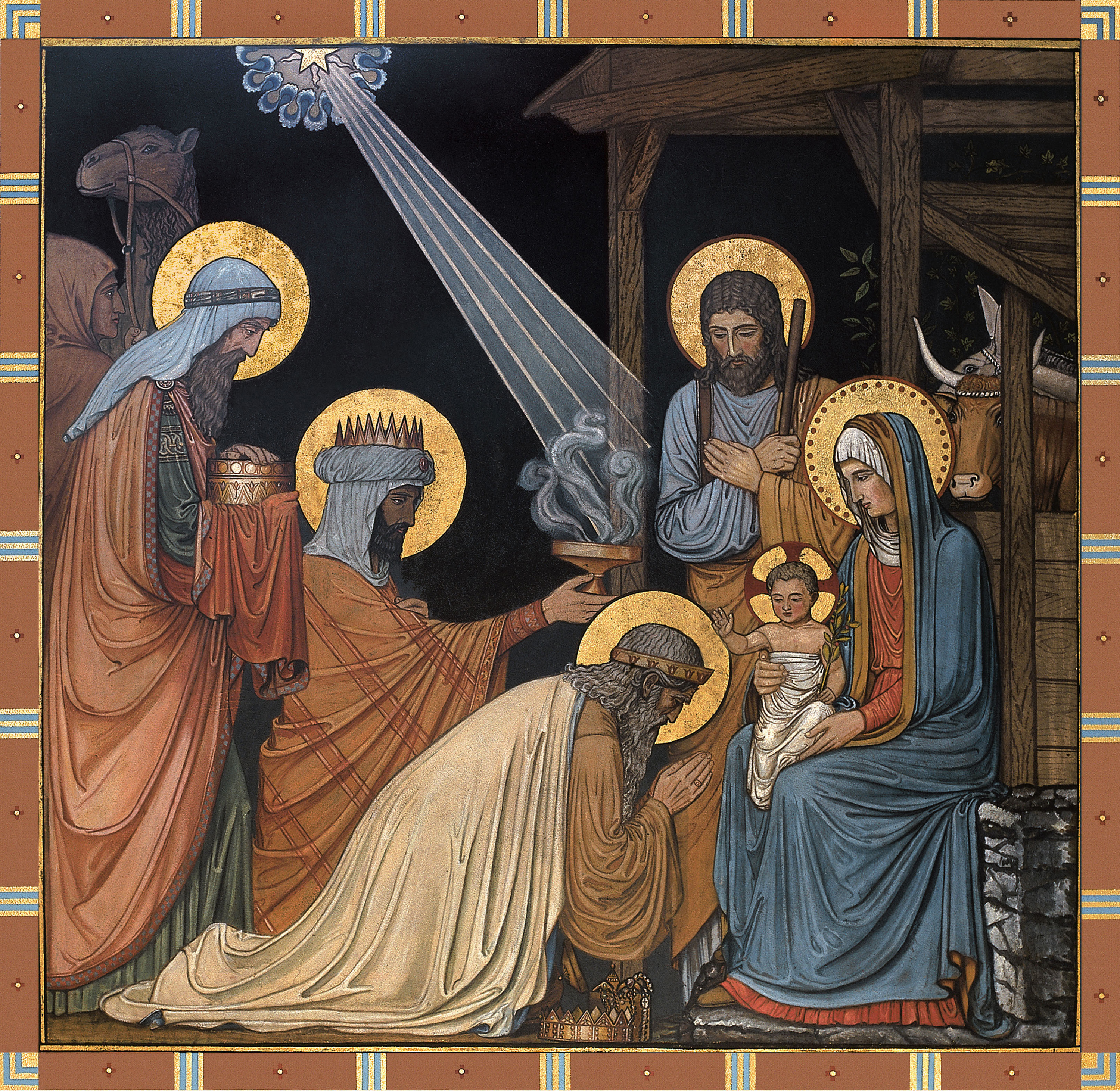 |
Epiphany 1 |
 |
Epiphany 2 Epiphany by Albert Herbert (1925-2008) Methodist Modern Art Collection |
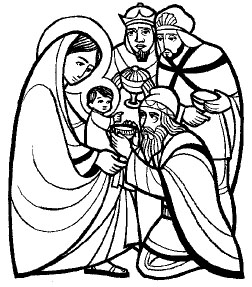 |
Epiphany 3 |
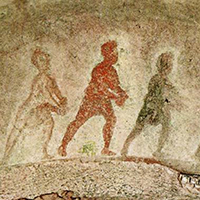 |
Epiphany 4 This is the earliest known artistic representation of the three wise men. |
 |
Epiphany 5 |
 |
Epiphany 6 |
 |
Epiphany 7 |
 |
Epiphany 8 |
 |
Epiphany 9 |
 |
Epiphany 10 David Popiashvili |
 |
Epiphany 11 |
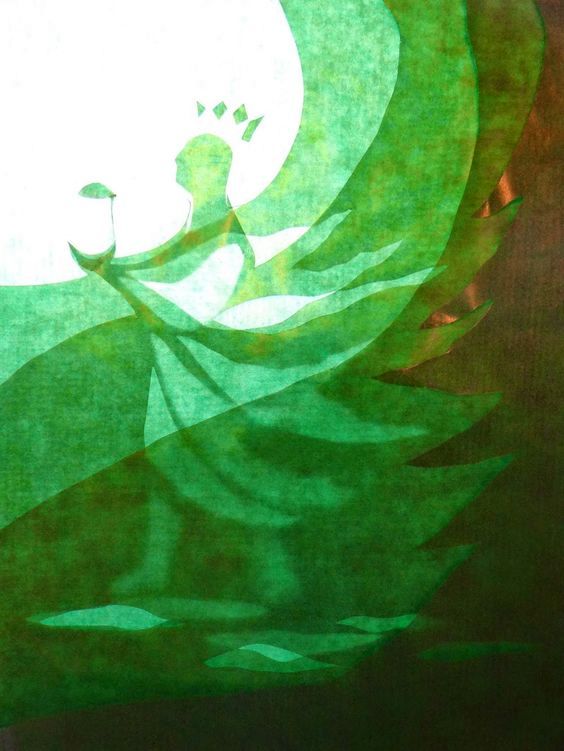 |
Caspar
|
 |
Melchior
|
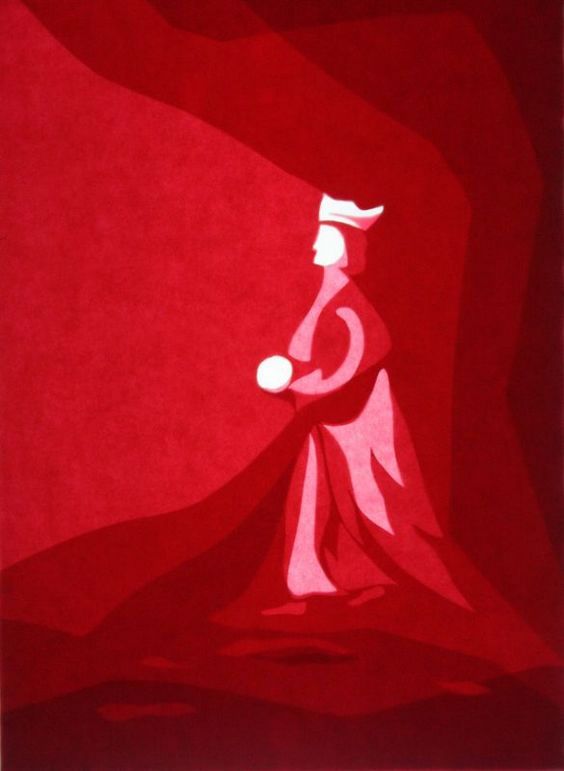 |
Balthasar
|
 |
Epiphany Images
|
| Art for Reflection | |
| Paintings and visual art can be used as a 'way in' for children. Ask them what they see, what they notice, what is unusual, what is significant. Use the phrase "I wonder . . ." | |
 |
The Adoration of the Magi Caspar holds a fine Chinese porcelein bowl. He has removed the lid to show that it is filled with gold coins. He wears a gold ring on his thumb studded with rubies. Notice the fingers of Jesus' right hand, counting his two natures: human and divine. This is God and man. And they point away into the darkness at the back of the picture. The focus and centre of the painting is the gift of myrrh. The baby's attention is drawn to this gift. What is the look on Christ's face? Melchior gazes into the distance past us, the observers. What does he see? What does the future hold for this child? The direction of Mary's stare is the same as Jesus' stare towards the myrrh. "And a sword shall pierce your own heart." Balthasar looks towards Mary. And Joseph has one eye on Balthasar completing the way in which each person in the painting is preoccupied. The mood portrayed on the faces of the kings is sombre, reflection, uneasy at what lies ahead. A very high resolution of this image which allows you to zoom in on minute detail is available on the |
 |
Three Kings This picture is full of movement. The three kings are rushing into the frame and towards the empty space on the right. Only the star brings them to a halt and sits serenly in the painting. Notice their eyes - what have they seen? Notice their fingers, both grasping their gifts, but also pointing foward. Explore their fantastical robes: the colours, the textures, the shapes and patterns. What do you see in the star? Notice the night sky: is a new day dawning? I wonder what the fish is doing there?
|
| Activities | |
 |
Templates to print off and make Three Kings models in card or paper.
|
 |
A collection of black and white drawings for colouring. |
| Video | |
 |
The Story of the Wise Men |
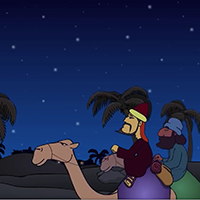 |
The Wise Men
|
 |
The Wise Men
|
 |
How to Understand the Three Wise Men
|
| Poems | |
The Journey of the Magi A cold coming we had of it.
|
|
| The Magi William Butler Yeats (1865-1939) Now as at all times I can see in the mind's eye, |
|
The Wise Men Step softly, under snow or rain, Oh, we have learnt to peer and pore We have gone round and round the hill The gods of violence took the veil Go humbly… it has hailed and snowed… The world grows terrible and white, The Child that was ere worlds begun The house from which the heavens are fed, Go humbly, humble are the skies, Hark! Laughter like a lion wakes |
|
The Three Kings Three Kings came riding from far away, |
|
Epiphany It might have been just someone else’s story, |
|
The Meeting Place It was the arrival of the kings It was, as I say, the kings And what were we to make of |
|
| Gold, Frankincense and Myrrh | |
 |
You can purchase stage prop gold nuggets from Frankincense is a type of incense and is available from many online sellers or from church suppliers: Myrrh is an expensive type of incense and can be bought online as a gum resin or as the liquid extract (known as an 'essential oil'). |
 |
The chemistry of gold, frankincense and myrrh. |
| Shrine of the Three Kings at Cologne | |
 |
Tradition has it that the bones of the three kings are kept in the cathedral at Cologne.
|
| Epiphany Customs from Around the World | |
As with all the great feasts of the Church's year, folk customs have grown up around the celebration of Christmas and the Epiphany. These domestic devotions make what is being celebrated more understandable and memorable, especially for children. |
|
 |
Germany: Dreikönigstag from |
 |
Spain and Mexico: Día de Los Reyes In Spain and Mexico the Day of the Three Kings is the day of which gifts are exchanged rather than on Christmas day. |
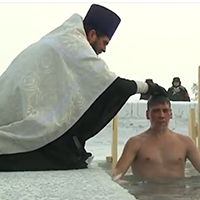 |
Russia: The Blessing of Water In Russia, the ancient link between the Epiphany and the baptism of Jesus is kept by blessing holy water and, for some, by taking a plunge into an icy river or lake!
|
